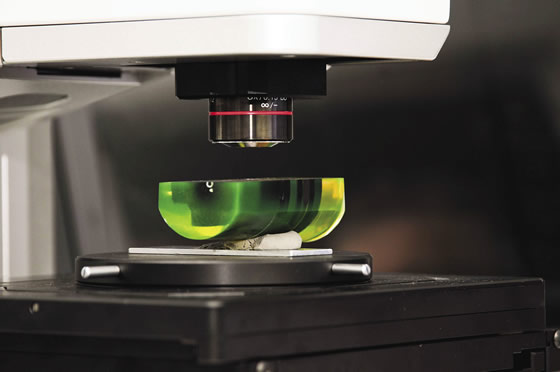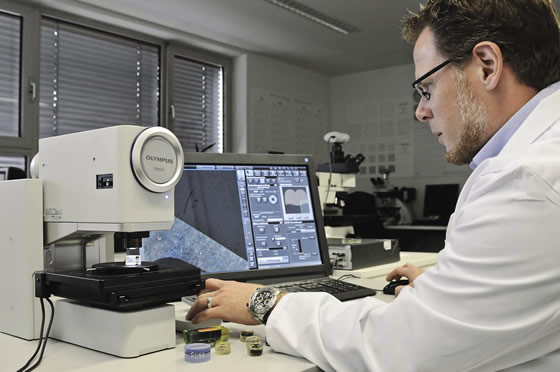END USER: SGS Institut Fresenius GmbH, +49 6128-744-0, www.institut-fresenius.de.
CHALLENGE: Increase QC efficiency when inspecting composite auto parts.
SOLUTION: An automated opto-digital microscope.
SOLUTION PROVIDER: Olympus NDT Corp., (800) 225-8330, www.olympus-ims.com.
SGS Institut Fresenius GmbH performs detailed inspection of materials and parts for the automotive, aerospace and medical industries. To improve efficiency when inspecting carbon fiber-reinforced polymer parts for the new BMW i3 electric car, the SGS team in Dortmund, Germany, added a DSX500 opto-digital microscope from Tokyo-based optics manufacturer Olympus Corp. to its equipment portfolio. (Olympus NDT Corp. is located in Waltham, Mass.)

According to a preselected grid pattern, the Olympus DSX500 opto-digital microscope automatically captures sample images.
As part of the QC process, SGS has to prepare and examine roughly 300 CFRP micrographs before an initial sample can be approved. Because a reliable assessment of the micrograph requires a complete image, this was previously accomplished at high magnifications by using a microscope to capture about 20 single frames and manually compile them to create the full image. This process was time-consuming, with each micrograph taking 15 to 20 minutes to compose. The DSX500 has reduced micrograph production time to about 5 minutes, according to the institute. This means SGS can handle jobs more quickly to meet tight deadlines and spend more time evaluating the images.

SGS analyst Markus Ridder inspects a part with the Olympus DSX500 microscope.
The new microscope utilizes automated image stitching to overlay individual images, eliminating the need to manually define single frames. The microscope generates a selection of preview images from which users can choose the most suitable imaging method. When the method is selected automatically, necessary parameters are set without having to input additional information.
In addition, there’s not any concern about losing specimen orientation, even when an image is reduced or enlarged, because the macro map function always displays the viewpoint on screen, according to Olympus.
Inspection is also facilitated with a 13× optical zoom and a 30× digital zoom. Specialized functions of the microscope, such as the high dynamic range and the WiDER algorithm, provide options for inspecting objects with defects or extreme differences in reflectance.
LED illumination allows brightfield and darkfield observation methods to be combined, making it easier to detect defects or irregularities, while the differential interference contrast function allows uneven surfaces to be analyzed for defects or irregularities down to the microscale.
Related Glossary Terms
- nondestructive testing ( NDT)
nondestructive testing ( NDT)
Same as nondestructive inspection but implying use of a method in which the part is stimulated and its response measured quantitatively or semiquantitatively.








